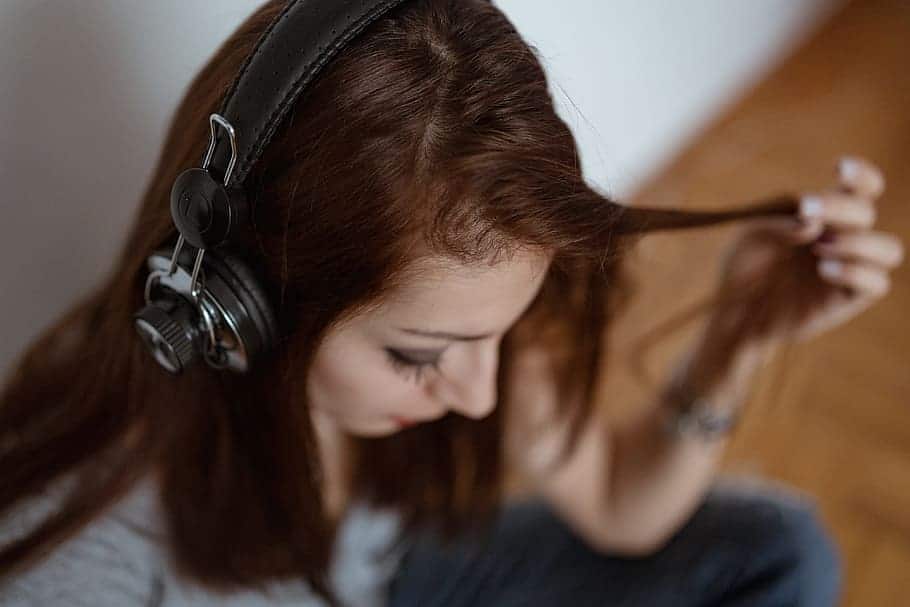Home > Emotional wellbeing > Mental health > Therapy through sound? How you can use ASMR for self-care


I’ll bet you’ve heard of talking therapy, aromatherapy, therapy through touching such as massage or acupuncture or somatic experiencing, even therapy through food or crochet! How lucky we are in this day and age to have such a plethora of potential methods to get out our nervous energy and sink into that crucial state of relaxation.
But what about therapy through sound? Can our ears also be a window to wellness and wellbeing?
ASMR – which stands for Autonomous Sensory Meridian Response – is still a relatively new term. It describes a feeling of euphoric tingling and relaxation that can come over someone when he or she watches certain videos or hears certain sounds. Some describe it as a “braingasm”, “brain butterflies” or simply as tingles starting at the back of the head and neck which trickle down the spine. But it seems that only a certain chunk of the human population can experience it. Does it sound familiar to you?
Maybe it’s when you go to the hair salon, or when being carefully examined by a healthcare professional – the combination of soft human contact and close personal attention is a common trigger.
Or, maybe you get it when you hear the light tapping of rain on the window, the crackling of a fire, or soft distant murmurs.
Some people get it when they witness someone closely concentrating on or examining something – maybe watching somebody write or draw quietly, type on their keyboard, or when somebody reads or observes something of yours.
Nowadays, as with most things, the internet has stepped in to give you access to this sensation whenever you want. It might sound strange, but there is a whole range of ASMR videos on YouTube. You might hear someone’s voice speaking or whispering, the sound of hair being brushed or trimmed, light scratching of a pencil on paper, or other triggers mentioned previously such as the rain or fire crackling.
There are three ways that people can experience ASMR:
ASMR can induce relaxation before bedtime, which can help you overcome insomnia. In fact, most ASMR videos you can find online have inducing sleep as their main purpose. Some “ASMRtists” will intentionally whisper you to sleep, while other videos will use various types of white noise to lure you into a deep slumber. Since most people with sleep problems blame their racing thoughts for their lack of shut-eye, ASMR could be just the ticket to let the mind trail off into a state of calm and peace, allowing you to put your worries to bed too.
On the reverse side, you can actually use ASMR to help you focus on a task. For instance, if you are working on an essay piece of artwork, listening to an ASMR clip can be an effective switch to your usual playlist. Many of us don’t like complete silence while we are working, but also find that most music – although it may make an otherwise boring and sensorily barren couple of hours a little more enjoyable – can be distracting. ASMR stimulates your senses more than even your favourite tracks could – and yet doesn’t complete with the task at hand for your attention.
ASMR is also a powerful soother for those prone to anxiety or depression. The same way it can quieten a chatty mind to help you drift off, it can also lift your mood and calm you down. If anxiety is your poison, then however these intrusive thoughts and constant worry are manifested, by incorporating ASMR into your self-care routine, you may well notice that you been generally calmer and that any compulsions begin to fade. When it comes to depression, just as human contact and personal attention can soothe a depressed soul by reminding you that you are a valuable human being, ASMR can mimic this sense of closeness even when no one is around. The little mood lift you get from the pleasant sensations which arise from the soft sounds can be the first nudge out of a dark mental place.
ASMR can be used as an alternative to traditional meditation as a way to achieve a relaxed, meditative state. Although ASMR videos range from roleplays to whispered ramblings, the non-verbal triggers, in particular, can be an effective way to quieten the mind, focus on nothing but the present and your own physical sensations, and temporarily separate yourself from the stresses of the world around you.
Since ASMR doesn’t work for everyone, it can be tough to imagine the sensation if you don’t experience it first-hand.
Although what exactly is going on inside our heads when we experience ASMR is yet to be determined, when we look at the most common triggers – personal attention, someone else’s concentration on a task, and the feeling of being somewhere safe and comforted – there’s a lot to unpack.
Maybe this stems from our tribal roots. We take incomparable pleasure in close companionship – which was historically demonstrated through grooming or friendly physical contact. It could also be a biological nostalgia from our infancy, from recreating the warm fuzzy feeling of being closely held, and the sense of security we once got from watching our guardians carry out mundane tasks such as writing, or folding laundry.
Whatever the exact science, we are already witnessing ASMR’s benefits on both our physical and mental health. And that’s enough for us!
ASMR: do you find it freaky or freaking amazing? Let us know down in the comments!

-


Dr Singh is the Medical Director of the Indiana Sleep Center. His research and clinical practice focuses on the myriad of sleep.

What is ovulation cramping? If you’ve ever noticed a dull ache on one side of your lower abdomen about 14 before your period, you probably experienced ovulation cramping. This discomfort occurs as the follicles rupture, releasing a mature egg. It

What is estradiol? Estradiol is a type of estrogen that’s produced primarily from the ovaries but in lesser amounts by the adrenal glands and fatty tissue. As one of the primary sex hormones, it plays a key role in regulating

What is ovulation bleeding? Ovulation bleeding is a slight vaginal bleeding that happens when your ovary releases an egg, a process called ovulation. Also known as mid-cycle bleeding, it generally occurs in the middle of your menstrual cycle at the
Hormona© 2024, All Rights Reserved
| Cookie | Duration | Description |
|---|---|---|
| cookielawinfo-checkbox-analytics | 11 months | This cookie is set by GDPR Cookie Consent plugin. The cookie is used to store the user consent for the cookies in the category "Analytics". |
| cookielawinfo-checkbox-functional | 11 months | The cookie is set by GDPR cookie consent to record the user consent for the cookies in the category "Functional". |
| cookielawinfo-checkbox-necessary | 11 months | This cookie is set by GDPR Cookie Consent plugin. The cookies is used to store the user consent for the cookies in the category "Necessary". |
| cookielawinfo-checkbox-others | 11 months | This cookie is set by GDPR Cookie Consent plugin. The cookie is used to store the user consent for the cookies in the category "Other. |
| cookielawinfo-checkbox-performance | 11 months | This cookie is set by GDPR Cookie Consent plugin. The cookie is used to store the user consent for the cookies in the category "Performance". |
| viewed_cookie_policy | 11 months | The cookie is set by the GDPR Cookie Consent plugin and is used to store whether or not user has consented to the use of cookies. It does not store any personal data. |
